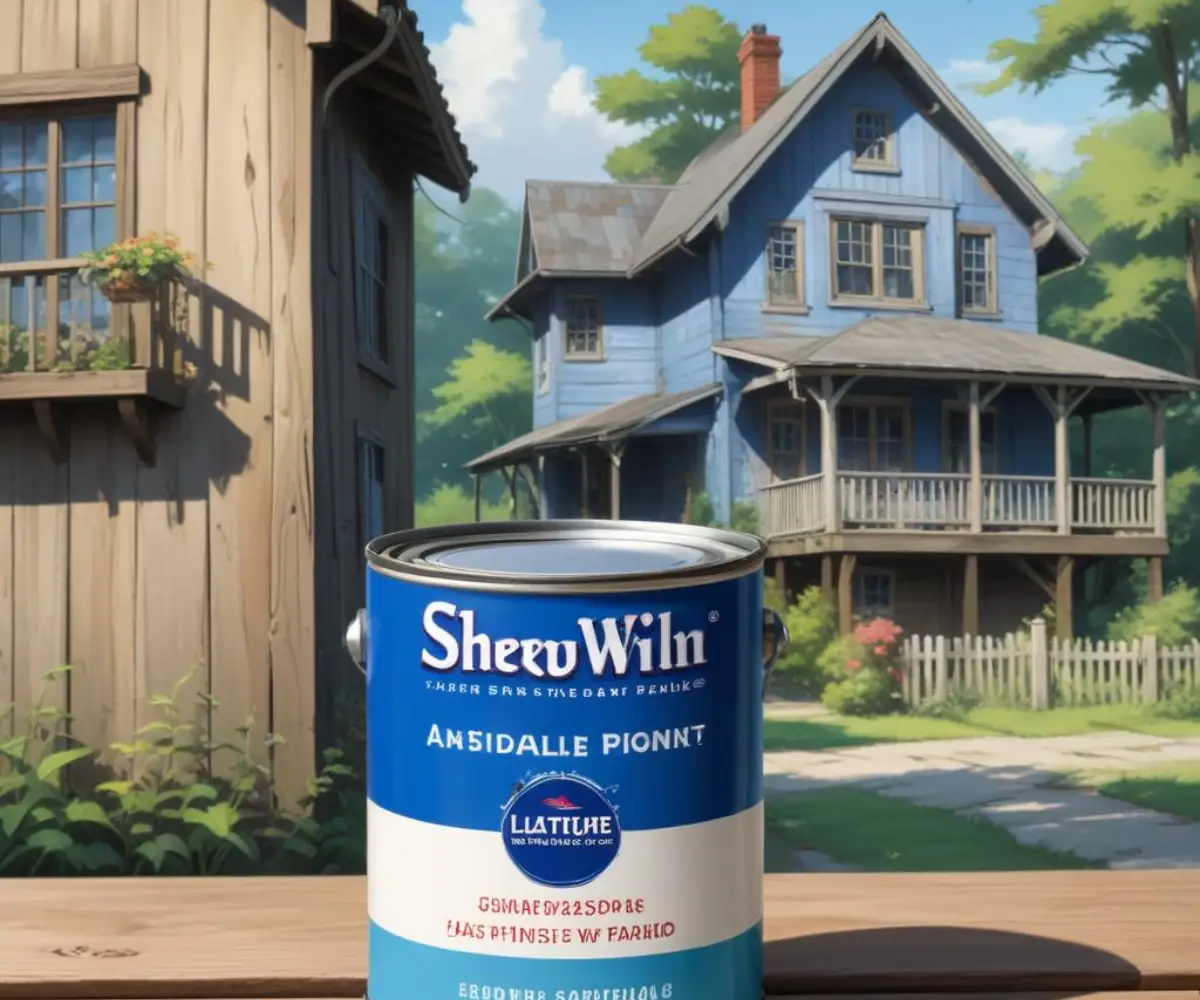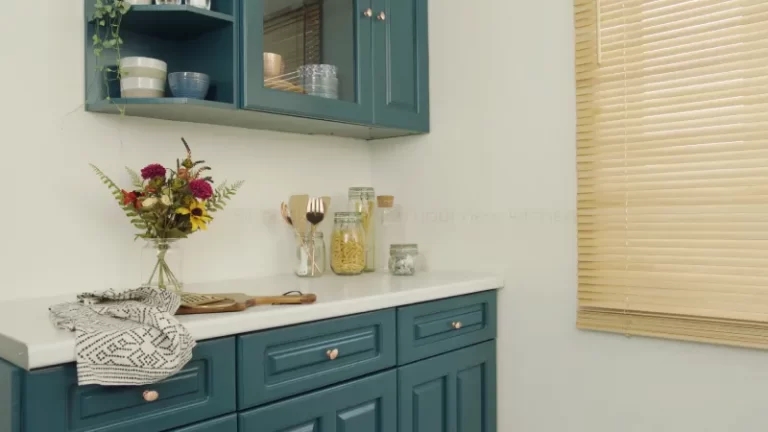Sherwin Williams Latitude vs Duration: Which Paint Saves You From an Exterior Nightmare?
Choosing the right exterior paint feels like a high-stakes decision for any homeowner or contractor. You’re not just picking a color; you’re selecting the primary shield for a home’s exterior, defending it against brutal sun, driving rain, and unpredictable temperature swings. A bad choice doesn’t just mean a disappointing finish—it can lead to peeling, cracking, and a costly repaint in just a few short years.
This is the exact problem that leads to the tense standoff between two of Sherwin-Williams’ most popular exterior products: Latitude and Duration. Both are trusted names, but they solve the problem of exterior protection in fundamentally different ways. Making the wrong call between them can mean fighting an uphill battle against the elements from day one.
You'll Learn About
Unpacking Sherwin-Williams Duration: The Benchmark for Toughness
For years, Sherwin-Williams Duration has been the gold standard for exterior paint durability. It’s a premium, high-build paint trusted by professionals for its incredible toughness and longevity. Its reputation is built on a simple promise: a thick, protective coat that lasts.
The core of its performance lies in its PermaLast® Technology. This formulation creates a measurably thicker paint film than conventional paints, which allows it to bridge hairline cracks and provide a more formidable barrier against moisture and wear. Many contractors love Duration for its “paint and primer in one” capability, which can save time on properly prepared surfaces.
Core Strengths of Duration
Duration’s main advantage is its sheer resilience. It is exceptionally resistant to peeling and blistering, making it ideal for high-traffic areas or homes that face harsh physical conditions. Its thicker consistency also contributes to fantastic hide and coverage, often requiring fewer coats to achieve a uniform finish.
Because of its robust nature, it’s a go-to choice for surfaces like wood siding, stucco, and masonry where a thick, durable coating is essential. When homeowners ask for a paint job that will last, Duration is often the first name that comes to mind. It’s built for long-term performance in stable, predictable climates.
Where Duration Might Fall Short
However, that famous thickness can also be a drawback. Duration can be more challenging to apply, especially for DIY painters. Its thicker consistency can feel “muddy” or difficult to brush out smoothly. Furthermore, its optimal application temperature is more limited, typically performing best in moderate weather, which isn’t always a reality for painters on a tight schedule.
One notable issue is its vulnerability to surfactant leaching if exposed to rain or heavy dew before it has fully cured. This can leave oily or streaky marks on the finish. For these reasons, while Duration is a durability champion, it demands the right conditions to truly excel.
Introducing Sherwin-Williams Latitude: The All-Weather Innovator
Recognizing the challenges posed by unpredictable weather, Sherwin-Williams developed Latitude. This paint is engineered for flexibility, not just in its finish, but in its application. Latitude is the problem-solver for painters who can’t wait for the perfect day to work.
The secret is its innovative ClimateFlex Technology™. This allows the paint to be applied in a much wider range of temperatures, from a chilly 35°F all the way up to a scorching 120°F. This is a game-changer for extending the painting season in both spring and fall and for working through hot summer days.
The Latitude Advantage: Weather-Adaptive Performance
Beyond its wide application window, Latitude develops early moisture resistance in as little as 30 minutes. This significantly reduces the risk of runs, streaks, or wash-offs from an unexpected rain shower, a common headache for any exterior painter. The formula is also designed for smoother application, flowing more easily than the heavier-bodied Duration.
This makes Latitude an excellent choice for regions with unpredictable weather, high humidity, or extreme temperature swings. It is also a more forgiving paint for less experienced painters while still delivering a durable, long-lasting finish resistant to peeling and cracking.
Limitations to Consider
While Latitude is incredibly versatile, it is a thinner paint than Duration. In a head-to-head comparison, Duration’s thicker film provides superior long-term durability and better crack-bridging capabilities. For homes with existing surface imperfections or in environments that demand the absolute toughest coating, Duration may still hold the edge.

Head-to-Head Battle: Latitude vs. Duration Compared
Choosing between these two excellent paints comes down to understanding the specific demands of your project, your climate, and your application conditions. Both are premium products, but they are engineered to solve different primary problems.
Duration is built for ultimate, long-term durability in ideal conditions. Latitude is built for excellent durability with maximum flexibility in challenging conditions. The choice often hinges on whether your biggest enemy is long-term wear and tear or the weather on painting day.
Feature-by-Feature Breakdown
To make the decision clearer, let’s break down how each paint performs across the most critical categories for an exterior project. This direct comparison highlights the distinct advantages each product brings to the table.
| Feature | Sherwin-Williams Latitude | Sherwin-Williams Duration |
|---|---|---|
| Core Technology | ClimateFlex Technology™ | PermaLast® Technology |
| Application Temperature | 35°F – 120°F (Wider Range) | 50°F – 100°F (More Restricted) |
| Moisture Resistance | Excellent (Resists rain in 30 mins) | Good (Vulnerable until fully cured) |
| Durability & Thickness | Very Good (Thinner, flexible film) | Excellent (Thicker, more robust film) |
| Application Feel | Smoother, easier to apply | Thicker, can be more difficult to brush |
| Best For | Unpredictable weather, extreme temperatures, painters needing scheduling flexibility. | Maximizing long-term durability, covering minor cracks, stable and mild climates. |
Price Point and Value Proposition
Both Latitude and Duration are positioned as premium paints, and their price reflects that quality. Generally, Duration is slightly more expensive per gallon. However, the true value depends on the project’s specific needs.
If Latitude’s weather flexibility allows a project to be completed on schedule without costly weather delays, it can offer superior overall value. Conversely, if Duration’s enhanced durability means an extra two or three years before a repaint is needed, its higher initial cost is easily justified. The decision is less about which paint is cheaper and more about which provides the right performance for your investment.
The Final Verdict: How to Choose the Right Paint for YOUR Project
The “better” paint is the one that best solves your specific problem. Are you a contractor in the Pacific Northwest trying to navigate a rainy spring? Or are you a homeowner in a mild, dry climate looking for the longest possible lifespan from your paint job? The answer to questions like these will point you to the right can.
Ultimately, both products represent the top tier of what Sherwin-Williams has to offer, much like the debate between their popular Showcase vs Emerald lines. Understanding their intended purposes is key.
Choose Sherwin-Williams Latitude If:
- You live in a region with unpredictable weather, such as frequent rain showers or dramatic temperature swings.
- You need to paint early or late in the season when temperatures are below 50°F.
- Your project timeline is tight, and you cannot afford weather-related delays.
- You prefer a paint with a smoother, more forgiving application.
Choose Sherwin-Williams Duration If:
- Your primary goal is achieving the longest possible lifespan for your paint job.
- The surface has numerous hairline cracks that would benefit from a high-build, crack-bridging film.
- You are painting in a mild, stable climate with predictable weather.
- You are an experienced painter comfortable working with a thicker, heavier-bodied paint.
This decision is just as critical as choosing between different brands, such as in a Behr Dynasty vs Sherwin Williams comparison, where product technology defines the outcome. Proper surface preparation is also non-negotiable for either paint to perform as promised. Without a clean, dry, and sound surface, even the best paint will fail.
In the end, by matching the unique strengths of either Latitude or Duration to the specific challenges of your exterior project, you can turn a potentially stressful decision into a confident investment in your home’s protection and beauty.
Frequently Asked Questions
What is the main difference between Sherwin-Williams Latitude and Duration?
The primary difference lies in their key features. Latitude is formulated with ClimateFlex™ technology, allowing it to be applied in a wider range of temperatures (35°F to 120°F) and making it resistant to moisture in as little as 30 minutes. Duration, on the other hand, is known for its superior durability and thickness, making it a top choice for high-traffic areas and surfaces requiring long-lasting protection.
Which paint is more durable?
Duration is generally considered the more durable option. It is a premium paint that provides superior resistance to fading, chipping, and peeling, making it ideal for high-traffic areas and exteriors. While Latitude offers good durability, Duration’s thicker coating provides greater overall toughness.
When should I choose Latitude over Duration?
Latitude is the better choice when you are painting in unpredictable weather conditions. Its ClimateFlex™ technology allows for application in a broader temperature range and provides early moisture resistance, which is beneficial if rain is a possibility. It’s also a great option if you need a paint that lays down smoothly with fewer brush marks.
Which paint is more expensive?
Duration is positioned as a more premium, top-tier paint and is generally more expensive than Latitude. Latitude is considered a mid-range paint, offering a good balance of quality and affordability.
Can both paints be used for interior and exterior projects?
Both Latitude and Duration are available in interior and exterior formulations. However, Duration’s exceptional durability makes it a frequent recommendation for exteriors and high-traffic interior spaces. Latitude’s flexible application benefits are primarily highlighted for exterior use.

